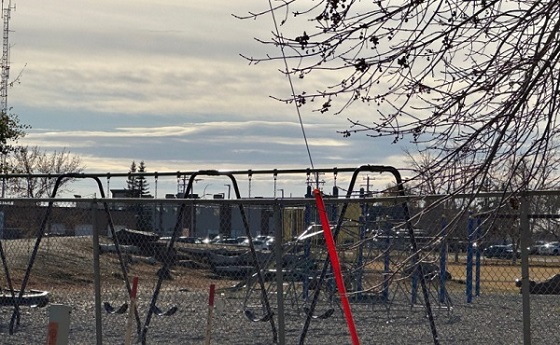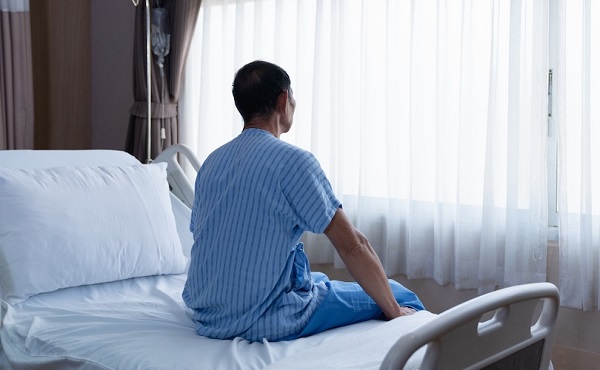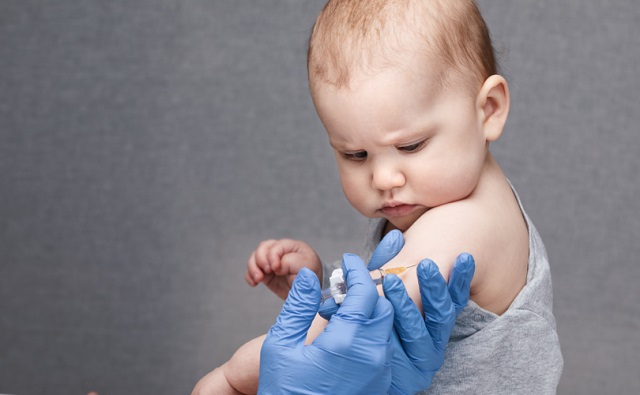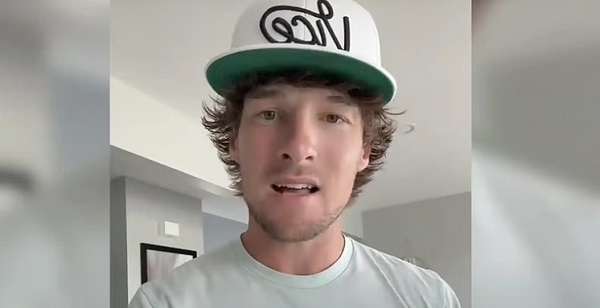Addictions
‘Greening out’: Experts call for THC limits in cannabis products

Experts warn surging THC levels are fuelling growing health risks — and say stronger regulation is urgently needed
More and more cannabis users are ending up in emergency rooms suffering from severe, repeated bouts of vomiting — a condition known as cannabis hyperemesis syndrome.
A new study found that emergency visits for cannabis hyperemesis syndrome increased 13-fold over eight years, accounting for more than 8,000 of the nearly 13,000 cannabis-related ER visits in that period.
Experts say the mounting health risks associated with cannabis use are due to rising THC levels in cannabis products. They urge stronger regulation, better labeling and more research — using Quebec’s approach as a potential model.
“I don’t think we have the perfect model in Quebec — there’s pros and cons,” said Dr. Didier Jutras-Aswad, a clinical scientist at the Centre hospitalier de l’Université de Montréal (CHUM) and a professor in the Department of Psychiatry and Addiction at Université de Montréal.
“But overall, the process of … progressively implementing changes, not wanting to be the first one in line to put all this new product on the market, I think is probably, in terms of public health, more prudent.”
THC levels
Tetrahydrocannabinol (THC) is the primary psychoactive compound in cannabis and what causes the “high.” It is one of more than 100 cannabinoids, or chemical compounds, naturally found in the cannabis plant.
Delta‑9‑THC is the most common and well-studied form, though other forms of THC exist and are less understood.
Federal drug laws place strict limits on delta-9-THC levels. They cap delta-9-THC at 10 milligrams per piece for edibles, and 1,000 milligrams per container for extracts and topicals. Dried cannabis flower and pre-rolled joints have no THC cap, but must disclose the THC level on their labels.
Other intoxicating cannabinoids — like delta-8-THC — are not regulated the same way. Some producers use these other cannabinoids to get around delta-9 limits to make their products more potent.
In 2023, Health Canada issued guidance warning against this practice, noting it could lead to inspections and regulatory action. Its guidance is not legally binding.
“Good weed”
Dr. Oyedeji Ayonrinde, a professor of psychiatry and psychology at Queen’s University, says “good weed” used to mean a product did not contain pesticides or contaminants. Now, it often means a product is high-THC — reinforcing the risky idea that stronger is better.
“We would say, Oh, man, that guy’s got good weed,’ because it’s 30 per cent [THC],” he said.
Today, THC levels average about 25 per cent — up from about four per cent in the 1960s. But some products go as high as 80 or 90 per cent THC.
“That’s ‘the good stuff,’” said Ayonrinde, referring to how consumers view products with these elevated levels of THC.
“One of the major [health] risk factors is the use of cannabis with higher than 10 per cent THC,” said Dr. Daniel Myran, a physician and Canada Research Chair at the University of Ottawa.
Myran led three Canadian studies this year linking heavy cannabis use to health risks such as schizophrenia, dementia and early death.
Chris Blair, a Canadian originally from Jamaica, says the cannabis he once smoked — natural, Jamaican, homegrown weed known as “sess” — was much milder than what is available through Ontario dispensaries today.
“We grew it, it was natural … the regular Mary Jane sess,” he said. “And then times changed … the sess was pushed to almost become the hydro[ponic] type of thing.”
Hydroponic growing methods produce more potent cannabis with higher THC levels. Blair says he could no longer go back to Jamaican sess, because he had built up a tolerance to it.
“Unfortunately, going back to sess was not the same, because it wasn’t the same high or same strength,” he said.
“Back when [I was] smoking [Jamaican sess] … I’d finished that spliff and we were ready to go hang out, we’re ready to party.
“Nowadays, after you smoke you’re mashed and you’re not doing anything.”
Greening out
Ayonrinde says higher THC levels can alter how the brain’s dopamine receptors work, which may induce paranoia.
“Being out of touch with reality, auditory hallucinogens, delusional thoughts, disorganized thinking — that’s part of the mechanism pathway for the development of a severe and enduring mental illness [like] schizophrenia,” he said.
High THC can also worsen anxiety, disrupt sleep, affect mood and trigger psychosis, he says. Other experts cited risks including cannabis use disorder, mental health issues, and dizziness or nausea — sometimes referred to as “greening out.”
Young people, whose brains are still developing until age 25, are most vulnerable to these harmful effects, Ayonrinde says.
During adolescence, the brain undergoes intense growth. “Think of the brain like a construction site,” he said. Frequent, high-dose THC use during this critical period can disrupt dopamine systems and increase the risk of building scaffolding for serious mental health conditions.
While some literature suggests that cannabidiol (CBD) — another major cannabinoid in most cannabis products — may act as a calming, non-psychoactive counterbalance to THC, Ayonrinde says this is only true at extremely high doses, around 6,000 mg.
Standard measurement
Experts say the diversity of cannabis products on the market is part of the challenge.
“When people say, ‘Weed helps me with my trauma,’ an example I often give is: cannabis is just like saying ‘dog’,” said Ayonrinde.
“What breed? Is it a chihuahua or a rottweiler or a great dane? Because without knowing exactly the THC, CBD … what are you talking about?
“There’s no single cannabis.”
Cannabis products lack clear dosage guidelines, and Ayonrinde says marketing messages push consumers to opt for high potency options.
Ruth Ross, a professor of pharmacology and toxicology at the University of Toronto, would like Canada to adopt a standard unit of measurement for THC levels, so consumers could easily understand what one unit means.
“Say a unit was one milligram; they could multiply that up — it’s easy math,” she said.
Myran agrees. “The way we sell alcohol in this country is not set up so that you pay the same amount for a litre of wine as you do for a litre of vodka,” said Myran.
“You have a minimum price per unit of ethanol … and there’s a really compelling reason to price cannabis according to its THC content … [to] financially discourage people from always moving to the highest potency THC products.”
Ross says there is also a need for more current cannabis research. Most cannabis research evaluates the effects of cannabis products with much lower THC levels than those seen on the market today. Long-term health effects can take decades to appear — similar to tobacco.
“Some of [the health harms] might emerge over many, many years, and we don’t know what those will be until data comes in,” she said.
Quebec’s approach
Ross points to Quebec as a unique model in cannabis regulation. It is the only province that caps THC potency and tightly controls how cannabis can be marketed. For example, edibles resembling candy or desserts are prohibited.
Jutras-Aswad, of the Université de Montréal, says overly strict rules can drive some consumers — especially those younger than the province’s legal age of 21 — to the black market.
Still, he says Quebec’s model offers benefits, including greater control over sales and a public health approach focused on harm reduction rather than profit.
Under Quebec’s Cannabis Regulation Act, the Société québécoise du cannabis (SQDC) is the only authorized cannabis retailer in the province.
SQDC employees are trained to offer science-based information, connect consumers with support services and promote safer use.
Researchers in Ontario are now studying how Quebec’s stricter THC limits may be affecting cannabis-related harms compared to other provinces.
“That’s going to be a really interesting within-Canada experiment,” said Ross.
Myran recommends adopting Quebec’s 30 per cent THC caps nationwide.
He also recommends better product labelling requirements and a pricing model that sets a minimum price per unit of THC — to discourage the purchase of high-potency products.
In a 2023 op-ed, Ross argued provinces should fund cannabis research to guide policy and public health.
In it, she notes that Quebec reinvested all $95 million of its 2022 revenue from cannabis sales into prevention and research. By contrast, Ontario set aside just 0.1% of its $170 million in cannabis revenue for a Social Impact Fund that has no clear public health focus.
“Canada can do so much better. We have world experts in cannabis research from coast-to-coast, and we are uniquely positioned to have high-quality, well-funded research on its medical use and potential harms,” she wrote.
“Five years from now, will we be dealing with major public health challenges that could have been avoided?”
This article was produced through the Breaking Needles Fellowship Program, which provided a grant to Canadian Affairs, a digital media outlet, to fund journalism exploring addiction and crime in Canada. Articles produced through the Fellowship are co-published by Break The Needle and Canadian Affairs.
The Bureau is a reader-supported publication.
To receive new posts and support my work, consider becoming a free or paid subscriber.
Invite your friends and earn rewards
Addictions
Activists Claim Dealers Can Fix Canada’s Drug Problem

By Adam Zivo
We should learn from misguided experiments with activist-driven drug ideologies.
Some Canadian public-health researchers have argued that the nation’s drug dealers, far from being a public scourge, are central to the cause of “harm reduction,” and that drug criminalization makes it harder for them to provide this much-needed “mutual aid.” Incredibly, these ideas have gained traction among Canada’s policymakers, and some have even been put into practice.
Gillian Kolla, an influential harm-reduction activist and researcher, spearheaded the push to whitewash drug trafficking in Canada. Over the past decade, she has advocated for many of the country’s failed laissez-faire drug policies. In her 2020 doctoral dissertation, she described her hands-on research into Toronto’s “harm reduction satellite sites”—government-funded programs that paid drug users to provide services out of their homes.
The sites Kolla studied were operated by the nonprofit South Riverdale Community Health Centre (SRCHC) in Toronto. Addicts participating in the programs received $250 per month in exchange for distributing naloxone and clean paraphernalia (needles and crack pipes, for example), as well as for reversing overdoses and educating acquaintances on safer consumption practices. At the time of Kolla’s research (2016–2017), the SRCHC was operating nine satellite sites, which reportedly distributed about 1,500 needles and syringes per month.
Canada permits supervised consumption sites—facilities where people can use drugs under staff oversight—to operate so long as they receive an official exemption via the federal Controlled Drugs and Substances Act. As the sites Kolla observed did not receive exemptions, they were certainly illegal. Kolla herself acknowledged this in her dissertation, writing that she, with the approval of the University of Toronto, never recorded real names or locations in her field notes, in case law enforcement subpoenaed her research data.
Even so, the program seems to have enjoyed the blessing of Toronto’s public health officials and police. The satellite sites received local funding from 2010 onward, after a decade of operating on a volunteer basis, apparently with special protection from law enforcement. In her dissertation, Kolla described how SRCHC staff trained police officers to leave their sites alone, and how satellite-site workers received special ID badges and plaques to ward off arrest.
Kolla made it clear that many of these workers were not just addicts but dealers, too, and that tolerance of drug trafficking was a “key feature” of the satellite sites. She even described, in detail, how she observed one of the site workers packaging and selling heroin alongside crackpipes and needles.
In her dissertation, Kolla advocated expanding this permissive approach. She claimed that traffickers practice harm reduction by procuring high-quality drugs for their customers and avoiding selling doses that are too strong.
“Negative framings of drug selling as predatory and inherently lacking in care make it difficult to perceive the wide variety of acts of mutual aid and care that surround drug buying and selling as practices of care,” she wrote.
In truth, dealers routinely sell customers tainted or overly potent drugs. Anyone who works in the addiction field can testify that this is a major reason that overdose deaths are so common.
Ultimately, Kolla argued that “real harm reduction” should involve drug traffickers, and that criminalization creates “tremendous barriers” to this goal.
The same year she published her dissertation, Kolla cowrote a paper in the Harm Reduction Journal with her Ph.D. supervisor at the Dalla Lana School of Public Health. The article affirmed the view that drug traffickers are essential to the harm-reduction movement. Around this time, the SRCHC collaborated with the Toronto-based Parkdale Queen West Community Health Centre— the only other organization running such sites—to produce guidelines on how to replicate and scale up the experiment.
Thankfully, despite its local adoption, this idea did not catch on at the national level. It was among the few areas in the early 2020s where Canada did not fully descend into addiction-enabling madness. Yet, like-minded researchers still echo Kolla’s work.
In 2024, for example, a group of American harm-reduction advocates published a paper in Drug and Alcohol Dependence Reports that concluded, based on just six interviews with drug traffickers in Indianapolis, that dealers are “uniquely positioned” to provide harm-reduction services, partly because they are motivated by “the moral imperative to provide mutual aid.” Among other things, the authors argued that drug criminalization is harmful because it removes dealers from their social networks and prevents them from enacting “community-based practices of ethics and care.”
It’s instructive to review what ultimately happened with the originators of this movement—Kolla and the SRCHC. Having failed to whitewash drug trafficking, Kolla moved on to advocating for “safer supply”—an experimental strategy that provides addicts with free recreational drugs to dissuade use of riskier street substances. The Canadian government funded and expanded safer supply, thanks in large part to Kolla’s academic work. It abandoned the experiment after news broke that addicts resell their safer supply on the black market to buy illicit fentanyl, flooding communities with diverted opioids and fueling addiction.
The SRCHC was similarly discredited after a young mother, Karolina Huebner-Makurat, was shot and killed near the organization’s supervised consumption site in 2023. Subsequent media reports revealed that the organization had effectively ignored community complaints about public safety, and that staff had welcomed, and even supported, drug traffickers. One of the SRCHC’s harm-reduction workers was eventually convicted of helping Huebner-Makurat’s shooter evade capture by hiding him from the police in an Airbnb apartment and lying to the police.
There is no need for policymakers to repeat these mistakes, or to embrace its dysfunctional, activist-driven drug ideologies. Let this be another case study of why harm-reduction policies should be treated with extreme skepticism.
Our content is always free
If you want to help us commission more high-quality journalism,
consider getting a voluntary paid subscription.
Addictions
Canadian gov’t not stopping drug injection sites from being set up near schools, daycares

From LifeSiteNews
Canada’s health department told MPs there is not a minimum distance requirement between safe consumption sites and schools, daycares or playgrounds.
So-called “safe” drug injection sites do not require a minimum distance from schools, daycares, or even playgrounds, Health Canada has stated, and that has puzzled some MPs.
Canadian Health Minister Marjorie Michel recently told MPs that it was not up to the federal government to make rules around where drug use sites could be located.
“Health Canada does not set a minimum distance requirement between safe consumption sites and nearby locations such as schools, daycares or playgrounds,” the health department wrote in a submission to the House of Commons health committee.
“Nor does the department collect or maintain a comprehensive list of addresses for these facilities in Canada.”
Records show that there are 31 such “safe” injection sites allowed under the Controlled Drugs And Substances Act in six Canadian provinces. There are 13 are in Ontario, five each in Alberta, Quebec, and British Columbia, and two in Saskatchewan and one in Nova Scotia.
The department noted, as per Blacklock’s Reporter, that it considers the location of each site before approving it, including “expressions of community support or opposition.”
Michel had earlier told the committee that it was not her job to decide where such sites are located, saying, “This does not fall directly under my responsibility.”
Conservative MP Dan Mazier had asked for limits on where such “safe” injection drug sites would be placed, asking Michel in a recent committee meeting, “Do you personally review the applications before they’re approved?”
Michel said that “(a)pplications are reviewed by the department.”
Mazier stated, “Are you aware your department is approving supervised consumption sites next to daycares, schools and playgrounds?”
Michel said, “Supervised consumption sites were created to prevent overdose deaths.”
Mazier continued to press Michel, asking her how many “supervised consumption sites approved by your department are next to daycares.”
“I couldn’t tell you exactly how many,” Michel replied.
Mazier was mum on whether or not her department would commit to not approving such sites near schools, playgrounds, or daycares.
An injection site in Montreal, which opened in 2024, is located close to a kindergarten playground.
Conservative Party leader Pierre Poilievre has called such sites “drug dens” and has blasted them as not being “safe” and “disasters.”
Records show that the Liberal government has spent approximately $820 million from 2017 to 2022 on its Canadian Drugs and Substances Strategy. However, even Canada’s own Department of Health admitted in a 2023 report that the Liberals’ drug program only had “minimal” results.
Recently, LifeSiteNews reported that the British Columbia government decided to stop a so-called “safe supply” free drug program in light of a report revealing many of the hard drugs distributed via pharmacies were resold on the black market.
British Columbia Premier David Eby recently admitted that allowing the decriminalization of hard drugs in British Columbia via a federal pilot program was a mistake.
Former Prime Minister Justin Trudeau’s loose drug initiatives were deemed such a disaster in British Columbia that Eby’s government asked Trudeau to re-criminalize narcotic use in public spaces, a request that was granted.
Official figures show that overdoses went up during the decriminalization trial, with 3,313 deaths over 15 months, compared with 2,843 in the same time frame before drugs were temporarily legalized.
-

 Daily Caller1 day ago
Daily Caller1 day ago‘Holy Sh*t!’: Podcaster Aghast As Charlie Kirk’s Security Leader Reads Texts He Allegedly Sent University Police
-

 Alberta2 days ago
Alberta2 days agoAlberta Offers Enormous Advantages for AI Data Centres
-

 Alberta2 days ago
Alberta2 days agoNational Crisis Approaching Due To The Carney Government’s Centrally Planned Green Economy
-

 Carbon Tax19 hours ago
Carbon Tax19 hours agoCarney fails to undo Trudeau’s devastating energy policies
-

 Great Reset1 day ago
Great Reset1 day agoCanadian government forcing doctors to promote euthanasia to patients: report
-

 Alberta2 days ago
Alberta2 days agoCalgary mayor should retain ‘blanket rezoning’ for sake of Calgarian families
-

 Health18 hours ago
Health18 hours agoNEW STUDY: Infant Vaccine “Intensity” Strongly Predicts Autism Rates Worldwide
-

 Alberta1 day ago
Alberta1 day agoSylvan Lake football coach fired for opposing transgender ideology elected to town council





